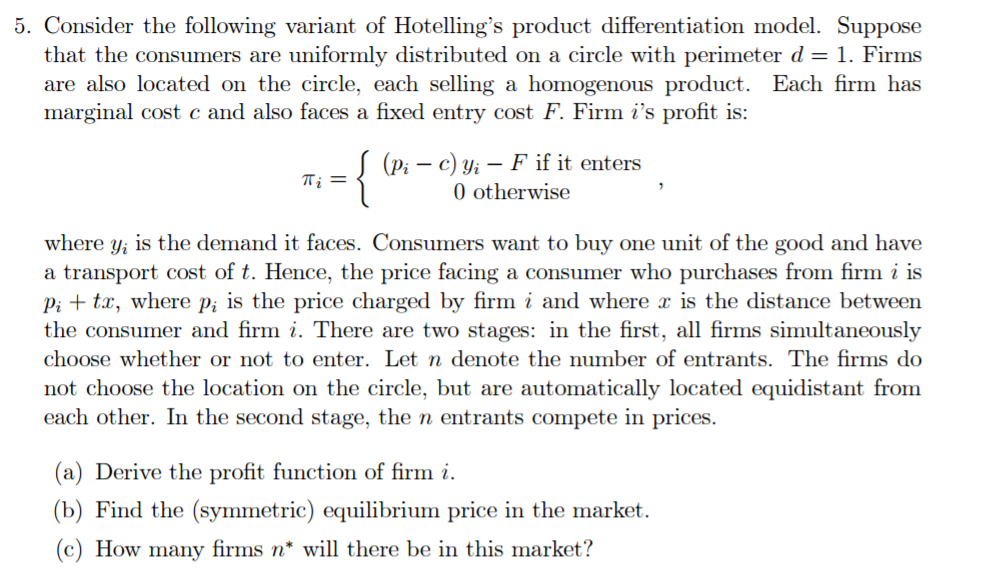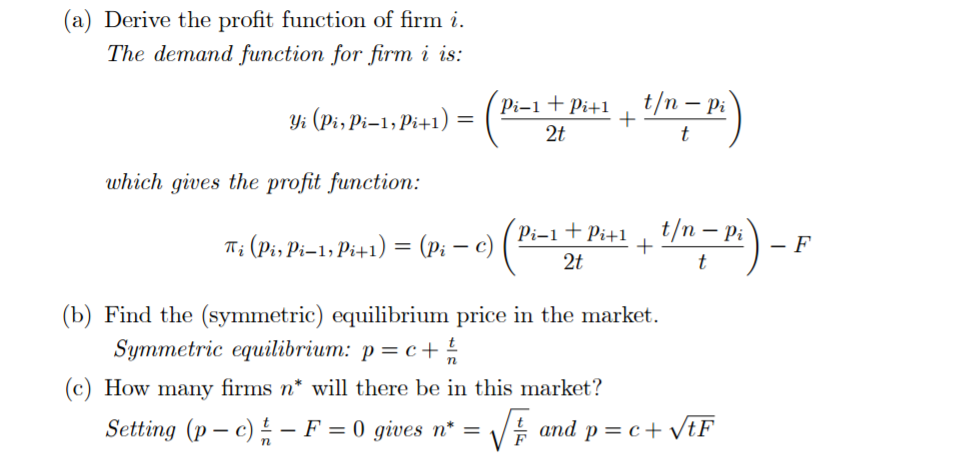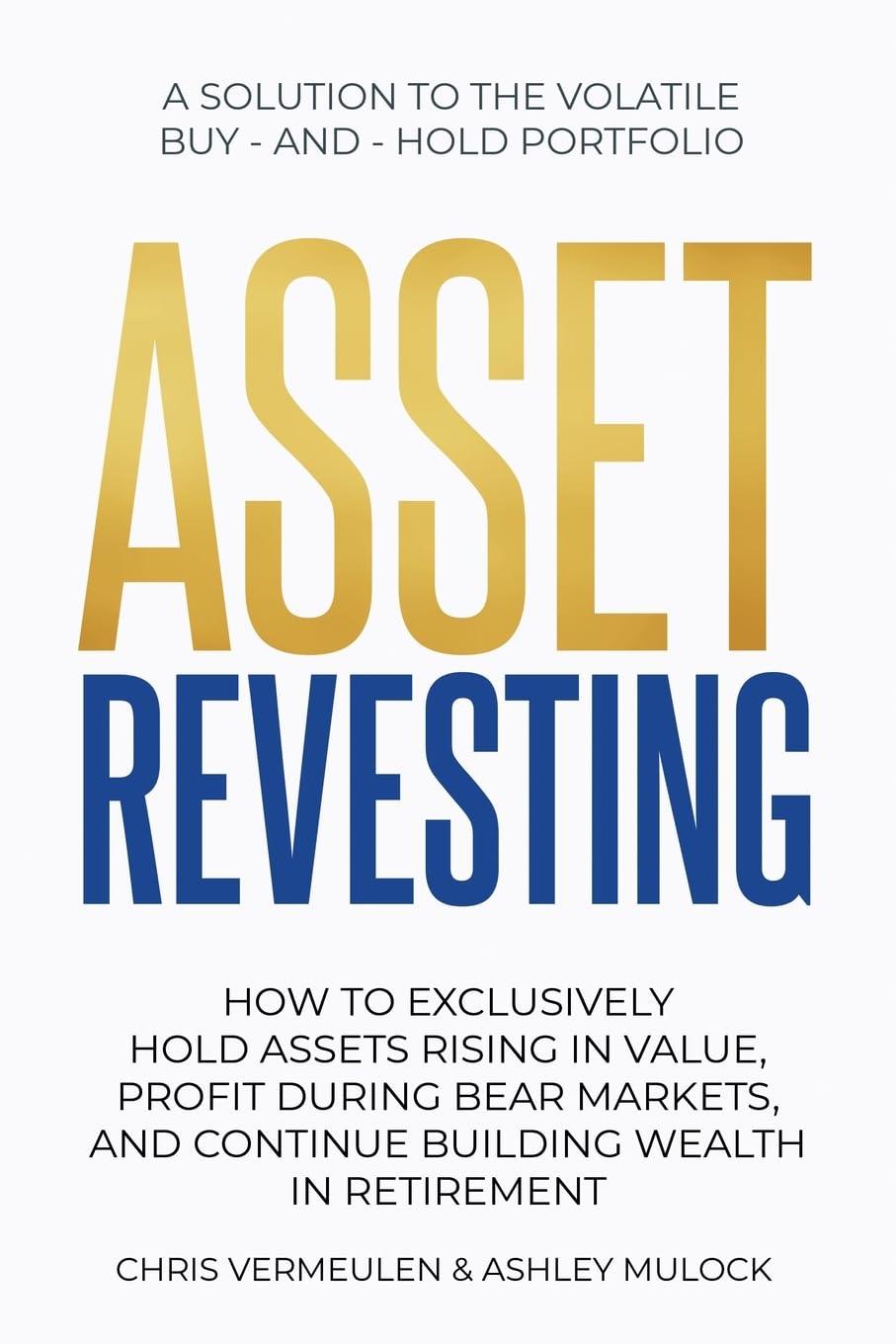Answered step by step
Verified Expert Solution
Question
1 Approved Answer
The Question: The Solutions: Can you please help me understand how to get to the solutions? Thank you. 5. Consider the following variant of Hotelling's
The Question:

The Solutions:

Can you please help me understand how to get to the solutions? Thank you.
5. Consider the following variant of Hotelling's product differentiation model. Suppose that the consumers are uniformly distributed on a circle with perimeter d 1. Firms are also located on the circle, each selling a homogenous product. Each firm has marginal cost c and also faces a fixed entry cost F. Firm i's profit is: (pi c) yi F if it enters 0 otherwise where yi is the demand it faces. Consumers want to buy one unit of the good and have a transport cost of t. Hence, the price facing a consumer who purchases from firm i is pi ta, where pi is the price charged by firm i and where is the distance between the consumer and firm i. There are two stages in the first, all firms simultaneously choose whether or not to enter. Let n denote the number of entrants. The firms do not choose the location on the circle, but are automatically located equidistant from each other. In the second stage, the n entrants compete in prices. (a) Derive the profit function of firm i (b) Find the (symmetric) equilibrium price in the market (c) How many firms n" will there be in this market? 5. Consider the following variant of Hotelling's product differentiation model. Suppose that the consumers are uniformly distributed on a circle with perimeter d 1. Firms are also located on the circle, each selling a homogenous product. Each firm has marginal cost c and also faces a fixed entry cost F. Firm i's profit is: (pi c) yi F if it enters 0 otherwise where yi is the demand it faces. Consumers want to buy one unit of the good and have a transport cost of t. Hence, the price facing a consumer who purchases from firm i is pi ta, where pi is the price charged by firm i and where is the distance between the consumer and firm i. There are two stages in the first, all firms simultaneously choose whether or not to enter. Let n denote the number of entrants. The firms do not choose the location on the circle, but are automatically located equidistant from each other. In the second stage, the n entrants compete in prices. (a) Derive the profit function of firm i (b) Find the (symmetric) equilibrium price in the market (c) How many firms n" will there be in this marketStep by Step Solution
There are 3 Steps involved in it
Step: 1

Get Instant Access to Expert-Tailored Solutions
See step-by-step solutions with expert insights and AI powered tools for academic success
Step: 2

Step: 3

Ace Your Homework with AI
Get the answers you need in no time with our AI-driven, step-by-step assistance
Get Started


